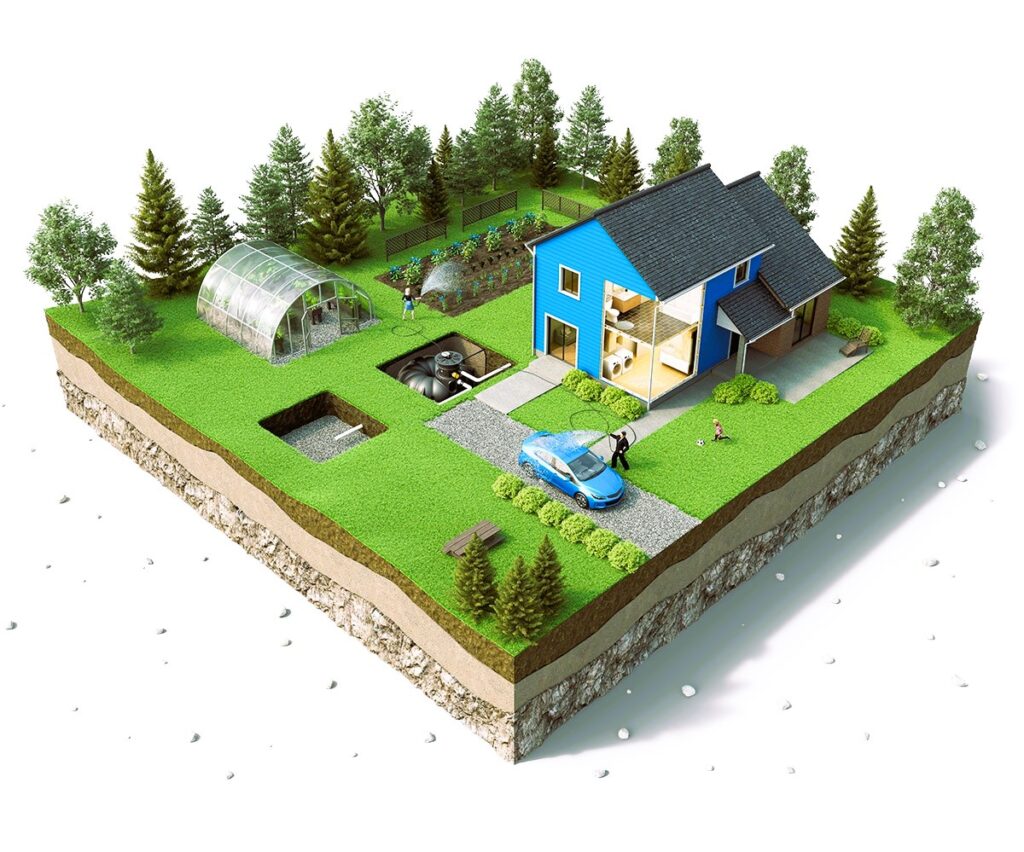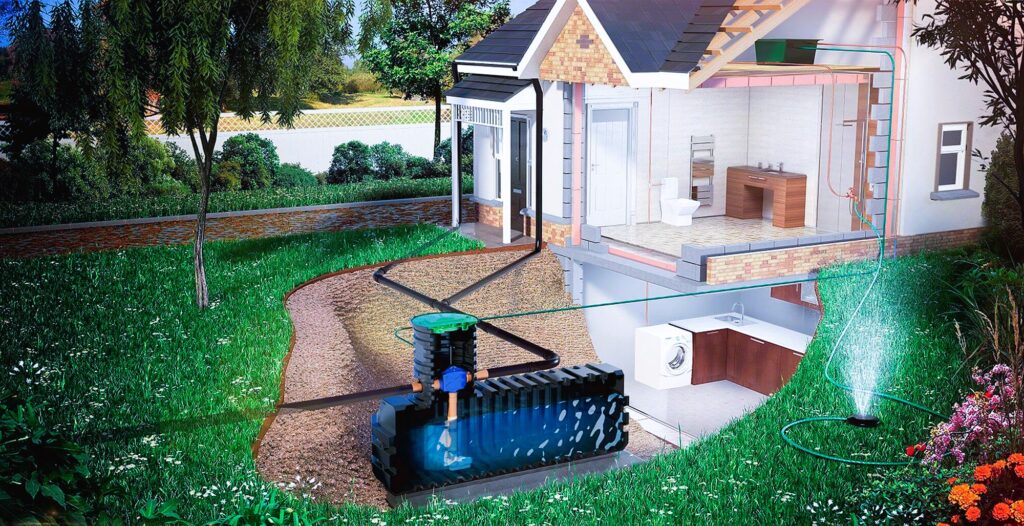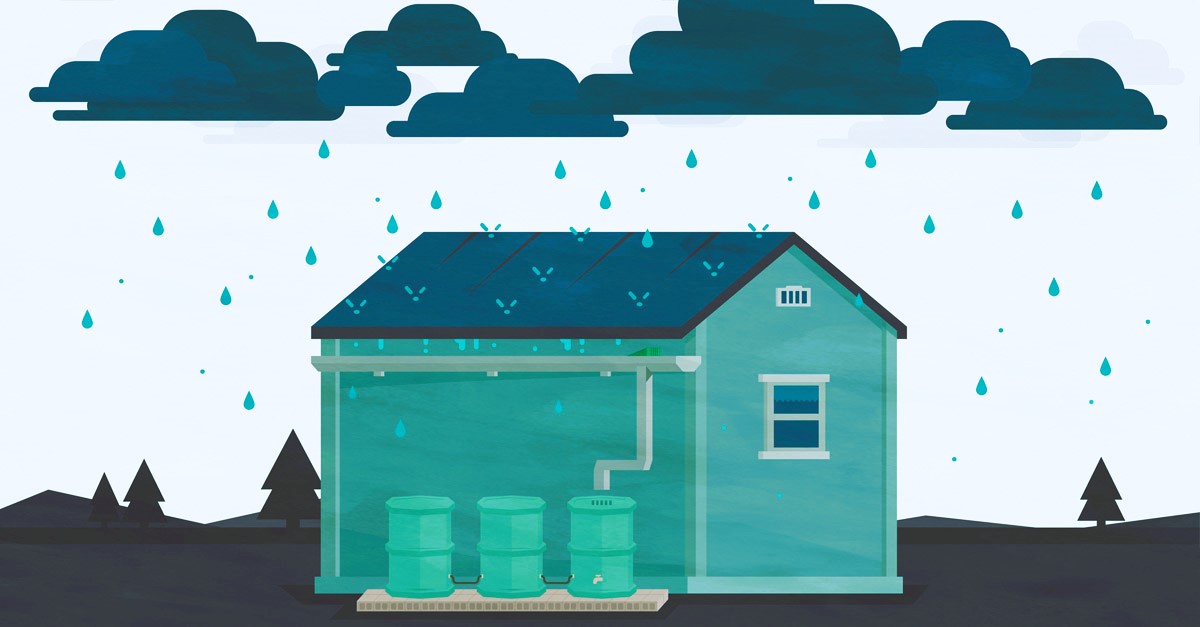Cottages are often synonymous with tranquility and a connection to nature. Many cottage owners seek to enhance their retreats by adopting sustainable practices that not only reduce their environmental footprint but also make the most of the natural surroundings. One such practice gaining popularity is rainwater harvesting. In this article, we’ll explore the concept of rainwater harvesting for cottage sustainability, highlighting its benefits, implementation, and the standards that ensure its success.
Understanding Rainwater Harvesting
Rainwater harvesting is the practice of collecting and storing rainwater from rooftops or other surfaces for later use. This harvested rainwater can be used for a variety of purposes, including:
- Irrigation: Watering gardens, lawns, and outdoor plants.
- Toilet Flushing: Replacing the use of potable water for flushing toilets.
- Laundry: Using rainwater for laundry machines.
- General Cleaning: Cleaning outdoor spaces, vehicles, and tools.
- Supplemental Indoor Use: In some cases, treated rainwater can be used for non-potable indoor purposes.
Benefits of Rainwater Harvesting for Cottages

- Sustainability: Rainwater harvesting reduces the demand for potable water, which is especially important in regions with water scarcity or during dry seasons.
- Cost Savings: By using harvested rainwater for irrigation and non-potable purposes, cottage owners can significantly reduce their water bills.
- Reduced Strain on Wells: For cottages relying on well water, rainwater harvesting can help reduce the strain on the well, prolonging its lifespan.
- Environmentally Friendly: Rainwater harvesting reduces stormwater runoff, which can carry pollutants into nearby bodies of water, helping protect the natural environment.
- Independence: It provides an additional water source, increasing cottage self-reliance, especially during water shortages or power outages. Winterizing Your Cottage: Tips for Cold-Weather Comfort.
Components of a Rainwater Harvesting System
A rainwater harvesting system typically consists of the following components:
- Catchment Area: This is the surface, usually the roof of the cottage, where rainwater is collected.
- Gutters and Downspouts: These direct rainwater from the catchment area to the storage tank.
- Leaf Screens: Screens prevent debris, leaves, and insects from entering the system.
- Storage Tank: Rainwater is stored in a tank or cistern until it is needed.
- First Flush Diverter: This device diverts the initial rainwater flow, which may contain contaminants, away from the storage tank.
- Filtration System: Filters remove sediments and other impurities from the collected rainwater.
- Pump and Distribution System: A pump is used to pressurize and distribute the harvested rainwater to where it is needed.
- Overflow System: Excess rainwater is directed to an overflow system to prevent flooding.
Rainwater Harvesting Standards and Guidelines
To ensure the effectiveness and safety of rainwater harvesting systems, it’s essential to follow relevant standards and guidelines. In Canada, the national standard for rainwater harvesting systems is governed by CSA B805.1, titled “Rainwater Collection Systems.” This standard provides comprehensive guidance on design, installation, and maintenance of rainwater harvesting systems to ensure they meet safety and quality standards.
Additionally, Wikipedia offers an overview of rainwater harvesting practices, technologies, and applications, making it a valuable resource for understanding the topic in-depth.
Implementing Rainwater Harvesting at Your Cottage

If you’re considering rainwater harvesting for your cottage, here are the basic steps to get started:
- Assessment: Evaluate the suitability of your cottage’s roof for rainwater harvesting and identify potential uses for the harvested water.
- Design: Plan your rainwater harvesting system, including the size of the storage tank, filtration system, and distribution methods.
- Installation: Install the components of your system, ensuring that they comply with relevant standards and regulations.
- Maintenance: Regularly inspect and maintain your system to keep it in good working order.
- Education: Familiarize yourself with local regulations and guidelines related to rainwater harvesting to ensure compliance.
Conclusion
Rainwater harvesting is an eco-friendly practice that aligns with the sustainable and nature-oriented ethos of cottage living. By capturing and utilizing rainwater, cottage owners can reduce their environmental impact, save on water costs, and enhance their connection to the natural world. To ensure a successful rainwater harvesting system, adherence to standards and guidelines, such as CSA B805.1 in Canada, is essential. By embracing rainwater harvesting, cottage owners can contribute to the preservation of natural resources and create a more sustainable and self-sufficient retreat.

